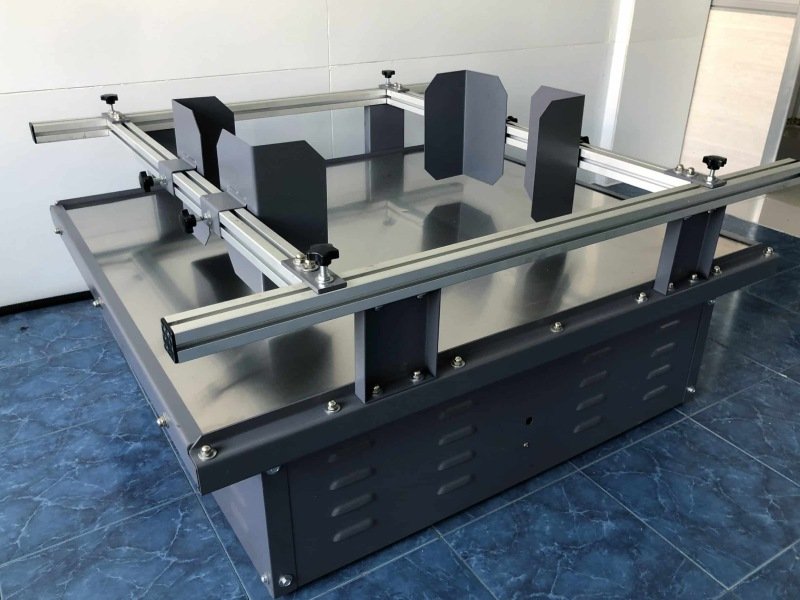When you think of hinges, you might picture the simple metal pieces that let a door swing open and shut. But hinges have evolved far beyond their basic function, and one of the most fascinating advancements in this field is the damping hinge. If you’ve ever closed a cabinet door and appreciated how it shuts gently without slamming, or marveled at a laptop screen that stays perfectly in place, you’ve likely encountered a damping hinge—or at least its effects. In this blog, we’ll dive deep into what a damping hinge is, how it works, and the surprising variety of ways it’s used in everyday life and specialized industries. By the end, you’ll see why this small component is a big deal.
What is a Damping Hinge?
At its core, a damping hinge is a type of hinge designed to control motion. Unlike a standard hinge that simply allows rotation, a damping hinge slows down the movement of the object it’s attached to, preventing abrupt stops or slams. This is achieved through a mechanism—often involving a viscous fluid, springs, or friction—that absorbs energy and reduces the speed of motion. Think of it as a tiny shock absorber for doors, lids, or panels.
The key difference between a damping hinge and other hinges, like friction hinges, lies in its purpose. A friction hinge uses constant torque to hold something in place at any angle (like a laptop screen), while a damping hinge focuses on slowing movement without necessarily holding a position. When paired with a weighted object, gravity might pull it down, but the damping hinge ensures it descends smoothly rather than crashing.
The technology behind damping hinges can vary. Some use hydraulic systems with liquid-filled chambers, where fluid flows through small openings to create resistance. Others rely on air friction or mechanical designs like springs and gears. Regardless of the method, the result is the same: controlled, gentle motion that enhances safety, durability, and user experience.
How Does a Damping Hinge Work?
To understand how a damping hinge operates, let’s break it down. Imagine a kitchen cabinet door with a damping hinge installed. When you push the door closed, it doesn’t just swing shut—it slows down as it nears the frame, closing softly. Here’s what’s happening behind the scenes:
- Energy Absorption: As the door moves, the damping hinge absorbs the kinetic energy of that motion. In a hydraulic damping hinge, for example, a piston moves through a fluid-filled cylinder. The fluid resists the piston’s movement, slowing it down.
- Controlled Resistance: The hinge is designed to provide just the right amount of resistance. Too much, and the door would feel sluggish; too little, and it wouldn’t prevent slamming. Manufacturers fine-tune this balance based on the application.
- Smooth Closure: Once the energy is dissipated, the door settles into its closed position without jarring impact. In some designs, the damping effect kicks in only at a certain angle (say, 60 degrees), ensuring the door closes confidently but gently.
This process might sound simple, but it’s a feat of engineering precision. The materials, fluid viscosity, and component tolerances all play a role in making it work seamlessly.
The Evolution of Damping Hinges
Hinges have been around for centuries—think of the wrought-iron hinges on medieval castle gates. But damping hinges are a modern innovation, born from the need for quieter, safer, and more durable solutions in homes and industries. The rise of hydraulic technology and advanced materials like high-strength plastics and stainless steel paved the way for these hinges. Today, they’re a staple in everything from furniture to aerospace, reflecting how small tweaks to old ideas can lead to big improvements.
Applications of Damping Hinges
Now that we know what a damping hinge is and how it works, let’s explore its applications. This little device punches above its weight, appearing in a surprising range of settings. Here’s a closer look at where damping hinges shine.
1. Furniture and Home Design
One of the most common places you’ll find damping hinges is in your home. They’re the unsung heroes of modern furniture, making everyday interactions smoother and quieter.
- Kitchen Cabinets: Ever slammed a cabinet door and winced at the noise? Damping hinges prevent that. Often called “soft-close hinges,” they’re standard in high-end kitchens, ensuring doors close gently even if you give them a forceful push. This not only reduces noise but also protects the cabinet from wear and tear.
- Wardrobes and Storage Units: Sliding wardrobe doors or heavy lids on storage chests benefit from damping hinges, which prevent sudden drops that could damage contents or pinch fingers.
- Toilet Seats: Yes, even your bathroom uses damping hinges! Soft-close toilet seats rely on them to lower slowly, sparing you the jarring bang of a seat crashing down.
In furniture, damping hinges elevate the user experience while extending the lifespan of the pieces they’re attached to. They’re especially popular in minimalist or luxury designs, where silence and smoothness are prized.
2. Automotive Industry
Cars are full of moving parts, and damping hinges play a key role in keeping those movements under control.
- Glove Compartments and Consoles: Open your car’s glove box or center console, and chances are a damping hinge ensures it doesn’t flop open too fast or slam shut. This protects the contents and adds a touch of refinement to the interior.
- Trunk Lids and Hoods: Some vehicles use damping hinges (or related damper systems) to manage the heavy lids of trunks and engine compartments, making them easier and safer to open and close.
- Grab Handles: In buses or trucks, grab handles often feature damping hinges to return to their resting position smoothly after use.
In automotive design, these hinges contribute to both safety and the perception of quality—a quiet, controlled motion feels more premium than a clunky one.
3. Electronics and Consumer Devices
Your gadgets owe a lot to damping hinges, even if you don’t notice them.
- Laptops and Tablets: While laptop hinges are often friction-based to hold the screen in place, some designs incorporate damping to ease the closing motion, reducing strain on the device.
- Appliances: Think of a microwave door or a refrigerator compartment lid. Damping hinges ensure these close softly, protecting delicate electronics and preventing spills.
- Cameras and Accessories: Professional camera rigs or foldable tripods sometimes use damping hinges for smooth adjustments without abrupt jolts that could ruin a shot.
In electronics, the focus is on precision and protection, and damping hinges deliver both.
4. Aerospace and Defense
The stakes are higher in aerospace, where every component must withstand extreme conditions. Damping hinges find a niche here too.
- Cabin Interiors: Overhead bins in airplanes often use damping hinges to prevent slamming, which could startle passengers or damage luggage. These hinges are designed to resist vibrations, ensuring silence during takeoff and landing.
- Equipment Panels: In cockpits or military vehicles, access panels with damping hinges allow for controlled opening and closing, critical in high-vibration environments.
The aerospace industry values damping hinges for their reliability and noise reduction—key factors in passenger comfort and operational efficiency.
5. Medical Equipment
In healthcare, precision and safety are paramount, and damping hinges fit the bill.
- Hospital Beds and Furniture: Adjustable bed panels or storage drawers in medical settings use damping hinges to move smoothly, avoiding sudden jolts that could disturb patients.
- Diagnostic Devices: Machines like MRI scanners or X-ray equipment often have panels or lids that rely on damping hinges for gentle operation, protecting sensitive components.
For medical applications, these hinges enhance usability while maintaining a sterile, quiet environment.
6. Industrial and Mechanical Systems
Beyond consumer products, damping hinges serve heavy-duty purposes.
- Machinery Covers: In factories, protective covers on machines use damping hinges to open and close without slamming, safeguarding workers and equipment.
- Trash Bins and Containers: Large industrial bins with lids benefit from damping hinges, ensuring they don’t crash down and cause noise or damage.
In industrial settings, durability and safety are key, and damping hinges deliver controlled motion even under tough conditions.
7. Specialty and Niche Uses
Damping hinges pop up in unexpected places too.
- Musical Instruments: Piano lids sometimes use damping hinges to lower gently, protecting the keys and reducing noise in performance spaces.
- Luxury Goods: High-end jewelry boxes or display cases often incorporate damping hinges for a refined, elegant closing action.
These niche applications show the versatility of damping hinges, adapting to specific needs with precision.
Benefits of Damping Hinges
Why are damping hinges so widely used? Here are the standout advantages:
- Noise Reduction: They eliminate slams and bangs, creating a quieter environment—perfect for homes, offices, or public spaces.
- Safety: By preventing sudden movements, they reduce the risk of pinched fingers or damaged goods.
- Tartósság: Controlled motion means less wear on hinges, doors, and frames, extending the life of the system.
- User Experience: The smooth, effortless operation feels premium and intuitive, enhancing satisfaction.
- Sokoldalúság: From tiny electronics to massive industrial lids, damping hinges adapt to countless scenarios.
These benefits make them a go-to solution for designers and engineers across industries.
Types of Damping Hinges
Not all damping hinges are the same. Here’s a rundown of the main types:
- Hydraulic Damping Hinges: Use fluid resistance for smooth, adjustable motion. Common in furniture and automotive uses.
- Rotary Damping Hinges: Small, circular dampers often mounted at hinge points, ideal for tight spaces like car consoles.
- Spring-Assisted Damping Hinges: Combine springs for lift assistance with damping for controlled closure, used in heavy lids.
- Plastic Damping Hinges: Lightweight and corrosion-resistant, great for budget-friendly or moisture-prone applications.
- Adjustable Damping Hinges: Allow users to tweak the resistance, offering flexibility for different weights or preferences.
Each type suits specific needs, balancing cost, durability, and performance.
Challenges and Considerations
While damping hinges are impressive, they’re not without challenges:
- Költségek: Advanced designs (like hydraulic models) can be pricier than standard hinges, impacting budget decisions.
- Maintenance: Over time, fluid-based hinges might leak or lose effectiveness, requiring replacement.
- Environmental Limits: Extreme heat or cold can affect fluid viscosity or material performance, so they must be matched to conditions.
- Installation: Some designs require precise alignment, adding complexity to assembly.
Engineers must weigh these factors against the benefits for each use case.
The Future of Damping Hinges
What’s next for damping hinges? As technology advances, we’re likely to see:
- Smarter Designs: Hinges with sensors to adjust damping dynamically based on speed or weight.
- Sustainable Materials: Eco-friendly plastics or recyclable metals to reduce environmental impact.
- Miniaturization: Even smaller hinges for compact devices like wearables or IoT gadgets.
- Testreszabás: More options for adjustable torque and damping levels, tailored to specific industries.
These innovations could make damping hinges even more ubiquitous, blending seamlessly into our lives.
Következtetés
From your kitchen cabinet to an airplane overhead bin, damping hinges are quietly revolutionizing how we interact with moving parts. They’re a perfect example of how small engineering tweaks can solve big problems—noise, safety, durability—all while improving our daily experience. Whether you’re a homeowner picking out furniture, a designer crafting the next big gadget, or an engineer building industrial systems, damping hinges offer a simple yet powerful solution.
Next time you close a door or lower a lid without a sound, take a moment to appreciate the damping hinge at work. It’s a tiny marvel that proves good design doesn’t always shout—it whispers.







